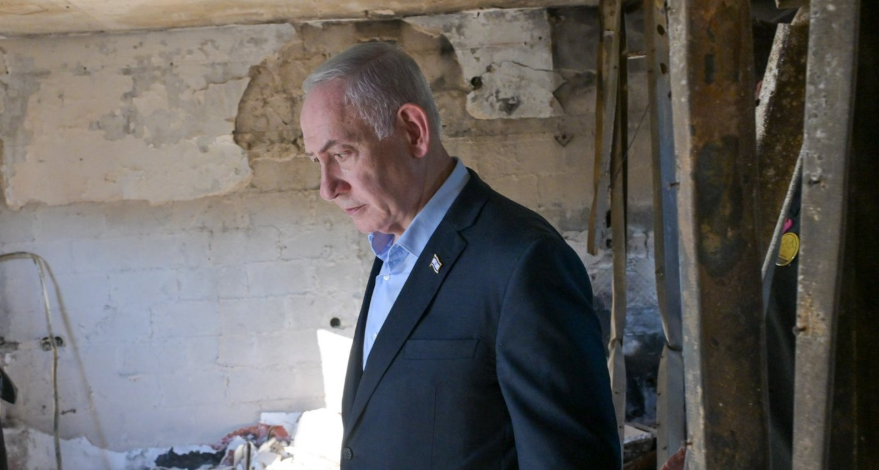In a major escalation, Israel carried out powerful airstrikes on Yemen’s capital Sanaa on August 24, 2025, striking power plants, oil facilities, and Houthi military bases after a Houthi cluster missile attack on Israel. The assault killed and injured dozens, shook the city with massive explosions, and raised fears of a wider Middle East war threatening global trade routes.
Israel Launches Airstrikes on Yemen’s Capital Sanaa
On August 24, 2025, Israeli fighter jets launched a series of heavy airstrikes on Sanaa, the Houthi-held capital of Yemen, in direct retaliation for a Houthi ballistic missile attack on Israel two days earlier. The strikes, some of the most extensive in recent months, highlighted the growing spillover of the Gaza war across the Middle East, dragging new fronts into an already volatile regional conflict.
Background: Houthis Step Up Attacks on Israel
The Iran-backed Houthi rebels, who control large swathes of Yemen including the capital Sanaa, have positioned themselves as part of Iran’s “axis of resistance,” alongside groups like Hamas and Hezbollah. Since October 2023, they have regularly launched missiles and drones against Israel, claiming solidarity with Palestinians in Gaza.
On August 22, 2025, the Houthis escalated their campaign by firing a ballistic missile fitted with a cluster warhead toward Israel—marking the first known use of such a weapon by the group. The missile fragmented mid-air; one piece landed in the backyard of a house in Ginaton, central Israel, causing damage but no injuries. The Israeli Air Force failed to intercept the missile, prompting an immediate investigation.
Cluster munitions are internationally controversial due to their indiscriminate nature and long-term danger to civilians. Although 112 countries have banned them under the 2008 Convention on Cluster Munitions, neither Israel, Iran, nor Yemen is a signatory. IDF officials linked the Houthi missile design to Iranian prototypes tested earlier this year, underscoring Tehran’s role in arming its regional proxy.
Details of the August 24 Airstrikes
In response, the Israeli military launched Operation “Neve Tzedek” (Oasis of Justice), the 15th confirmed operation against Houthi forces since their campaign against Israel began. The strikes targeted multiple sites across Sanaa:
- A military compound that previously housed the presidential palace, described by Israeli officials as a hub for Houthi military operations.
- The Asar and Haziz power plants, which supply electricity to critical Houthi installations. The Haziz station had already been targeted on August 17.
- A fuel storage site and oil processing facility, with Houthi outlets reporting a strike on an oil company building on Al-Sittine Street.
- A municipal building in central Sanaa, according to Houthi security sources.
The operation involved nearly a dozen IAF aircraft, including fighter jets and mid-air refuelers, due to the 1,800-kilometer distance between Israel and Yemen. Around 35 precision munitions were dropped during the raids. Prime Minister Benjamin Netanyahu, Defense Minister Katz, and IDF Chief of Staff Lt. Gen. Eyal Zamir monitored the strikes live from the IAF command center in Tel Aviv, highlighting the operation’s strategic weight.
Social media videos from Sanaa showed towering fireballs and thick smoke plumes, particularly near the oil facility and Sabeen Square. Residents described powerful blasts that shattered windows, rocked neighborhoods, and left parts of the city in darkness.
Casualties and Immediate Impact
The Houthi-run Al-Masirah TV and Saba news agency reported at least two fatalities and five injuries, while the Houthi health ministry later raised the toll to two killed and 35 wounded. Most of the casualties were linked to the strike on the oil company facility.

The IDF declined to confirm casualty numbers, emphasizing instead that the sites targeted were used for military purposes. Israeli officials accused the Houthis of deliberately embedding their operations within civilian infrastructure. Independent verification of the casualty claims was not immediately available.
This strike follows a pattern: Countries earlier raids, such as the August 17 hit on Haziz power station and a May 2025 attack on Sanaa International Airport, have repeatedly focused on degrading Houthi military infrastructure while also disrupting vital services.
Reactions from Both Sides
Houthi leaders vowed that strikes would not deter them from continuing attacks on Israel. Senior official Mohammed al-Bukhaiti declared, “The Israeli aggression against Yemen will not discourage us from continuing our support for Gaza, no matter the sacrifices.” Another Houthi leader, Abdul Qader al-Murtada, echoed the sentiment on social media, pledging unrelenting support for Palestinians.
IDF leaders took a hardline stance. Defense Minister Israel Katz warned that the Houthis would “pay with compound interest” for every attack on Israel. He also framed the strikes as part of Israel’s broader air and sea blockade aimed at weakening Iran’s proxies. Netanyahu’s direct involvement in overseeing the operation underscored its political and military importance.
Broader Regional Implications
The escalation highlights the dangerous regional dynamics at play. The Houthis’ missile and drone campaign has already targeted over 100 vessels in the Red Sea since November 2023, threatening a global trade route that carries nearly 1 trillion dollars in goods annually.
Their new use of cluster munitions marks a further escalation in weaponry sophistication, with Israel accusing Iran of supplying advanced arms to its Yemeni allies. This reflects the wider proxy war dynamic, where the Gaza conflict has become a catalyst for regional flare-ups from Lebanon to the Red Sea.
The humanitarian toll on Yemen is also worsening. Already devastated by a decade-long civil war, the country’s fragile infrastructure has been repeatedly struck. Damage to power plants, oil facilities, and municipal sites risks further deepening fuel shortages and blackouts, compounding the suffering of civilians.
Conclusion
The August 24 Israeli airstrikes on Sanaa underscore how the Gaza war continues to reshape the Middle East beyond its immediate borders. By striking deep inside Yemen, Israel has shown its willingness to project force against Iran’s allies, while the Houthis’ use of cluster munitions signals a new level of escalation.
As both sides harden their positions, the cycle of attack and retaliation risks not only destabilizing Yemen further but also threatening global trade and deepening the humanitarian crisis. With no diplomatic breakthrough in sight, the Israel-Houthi confrontation now stands as a dangerous new front in the wider regional conflict.

